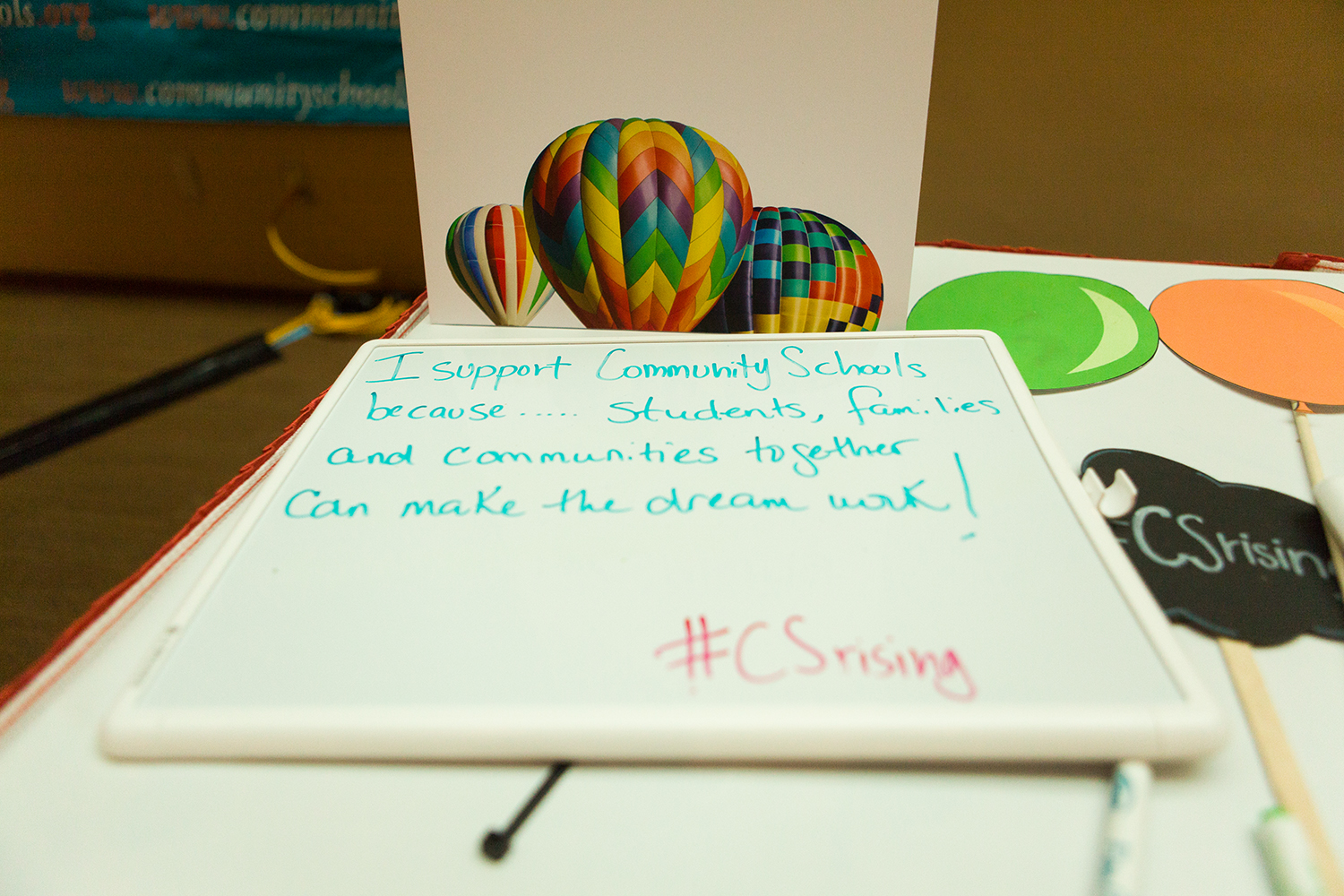
“M.D. Fox, as it’s called, with its lively students dressed in their light blue and khaki uniforms, is part of a growing phenomenon in the educational landscape: the community school. The Village coordinates the 10 to 20 organizations that work with M.D. Fox.
Community schools, which, among other things, integrate nonprofits, businesses and colleges on the school site to offer services to students and their families, have existed for more than a century. There are now an estimated 5,000 such schools nationwide, according to the national Coalition for Community Schools.
But the pandemic demonstrated what has long been known — that schools now serve as hubs for resources far beyond just teaching and learning — and the concept of community schools is garnering renewed attention and money.
“Ultimately, the pandemic has shown the power and potential of community schools,” stated a brief by the Brookings Institution.
The trend is bolstered by research demonstrating that community schools help increase students’ attendance and graduation rates. By addressing an array of student and family issues — from hunger and homelessness to health care — schools are lifting barriers that prevent students from fully participating in and benefiting from their education. The approach also helps to build trust that allows families to embrace the schools and their child’s learning.

“Family engagement is foundational,” said José Muñoz, director of the Coalition for Community Schools.
A full-service community school includes four elements: various integrated support services through nonprofits, businesses and higher-education institutions; active family and community engagement; expanded and enriched learning, which can include after-school, weekends and summers; and collaborative partnerships among parents, students, school administrators and community leaders
While these four pillars, as they are called, help define community schools, they shouldn’t be standardized, as each serves different populations and needs, Mr. Muñoz said. But one key element of a successful community school, he added, is a dedicated point person at each school — or in small or rural communities, for the district — that serves as the coordinator, such as Ms. Adgers at the Hartford school. Another is to focus on inclusive decision-making with families, educators and administrators.
A true community school initiative should not just be seen as additional support services, however, but a redefining of the relationship between schools, communities, students and families, advocates for the approach say.
Universities and colleges often build valuable partnerships with community schools. In 2015, the University of Pennsylvania established the Netter Center University-Assisted Community Schools Network; approximately 70 universities are now part of the effort.
Aside from supplying college students to assist and supplement staff in a variety of areas, they can offer much needed technical assistance and conduct research about or with community school students. And bringing the public school students on campus for a program or sports event gives the children firsthand experience of the college world.”
Read the full story here.